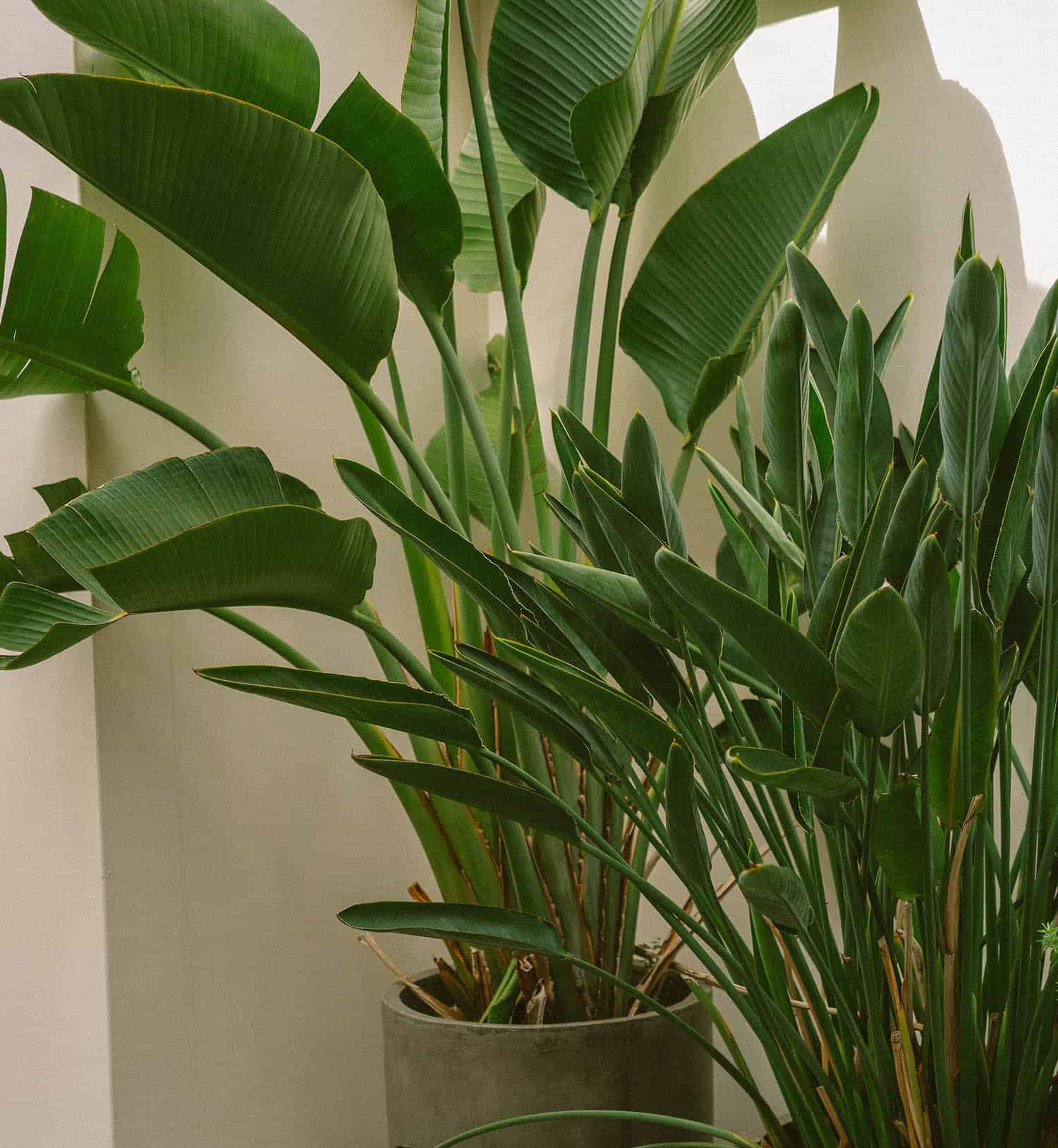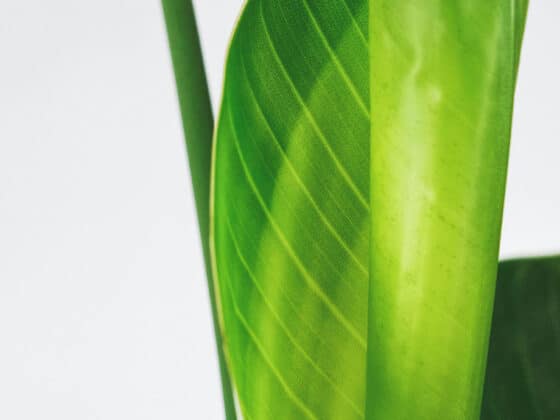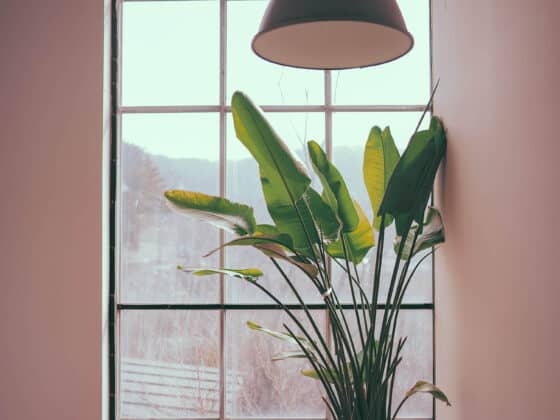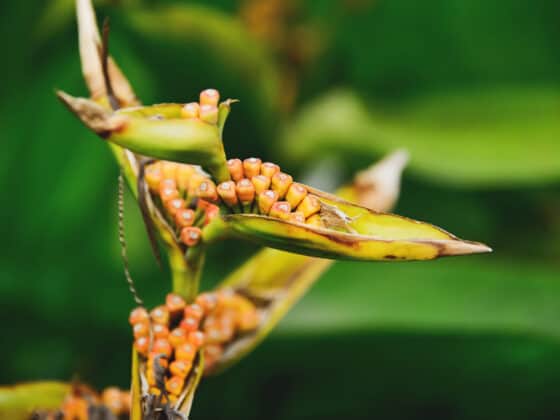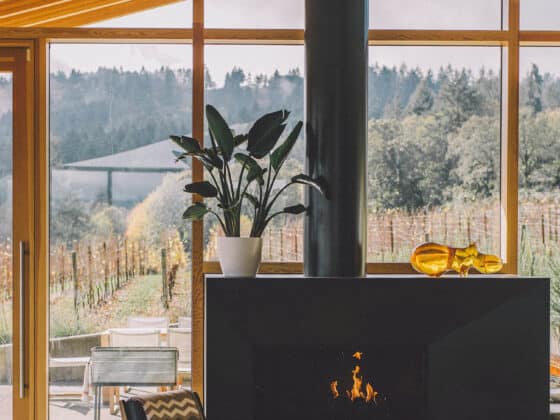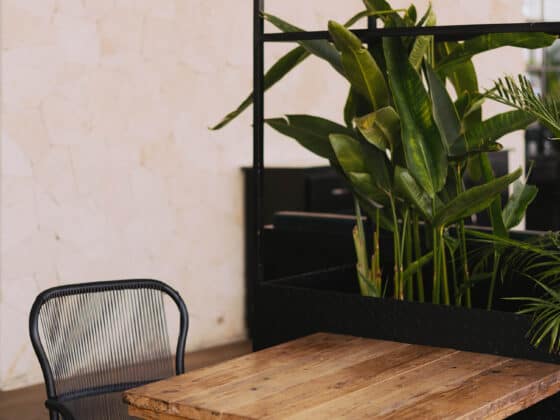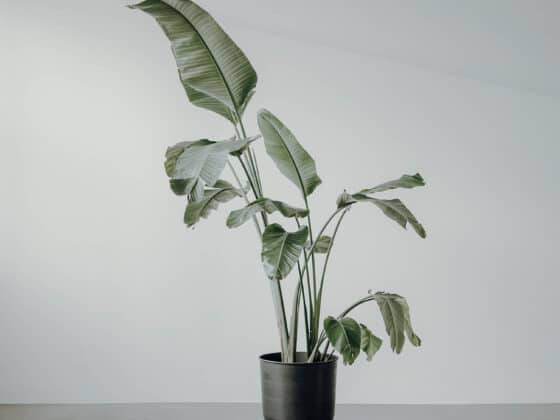When most people think of a Bird of Paradise, they imagine a tall, flowering houseplant with vivid orange flowers. But did you know that there are several varieties of Bird of Paradise, each with distinct characteristics? In fact, some can grow as tall as trees, while others feature dramatic, white flowers instead of the traditional, tropical hues.
Wondering what type of Bird of Paradise you have in your home or garden? Curious about Bird of Paradise species and what to expect? While all Bird of Paradise plants are part of the genus Strelitzia and have similar care requirements, these plants can offer surprising variety and interesting features to help you distinguish the different species.
Ready to learn more about what type of Bird of Paradise you own? Keep reading for an overview of the genus Strelitzia, as well as the different species it represents.
Bird of Paradise Species Overview
If you remember your biology classes, you may remember that living creatures are divided into Kingdom, Phylum, Class, Order, Family, Genus, and Species. Often this list is shown as an inverted pyramid, with Kingdom at the top. The farther down the pyramid you go, the more closely related the plants or animals in each category.
For example, Bird of Paradise and the Banana Tree, which is often mistaken for, are both members of the family Zingiberales. However, they both belong to a different genus. This means that they are related – much like cousins – but not so closely related as to share the same general characteristics.
Bird of Paradise belongs to the genus Strelitzia, which contains five species of closely related plants. Each of these Bird of Paradise varieties produces flowers, all of which have roughly the same structure, which resembles the head and crown of a tropical bird. For this reason, Bird of Paradise is also sometimes called a Crane Flower.
Furthermore, each of these varieties is perennial and native to South Africa – though varieties are more common to specific regions. All Bird of Paradise plants are evergreen, which means they retain their leaves longer than typical flowering plants.
Though, as we will discuss, Bird of Paradise species can vary dramatically in height, they are all characterized by tall, slender stalks, typically topped with a single leaf or flower. In fact, these plants may initially resemble a cluster of separate stems, though they are part of the same plant.
Beneath the soil, these stems are connected to a sturdier type of underground root system, called a rhizome, which is a kind of stem that supports the plant beneath the soil, and stores nutrients, such as carbohydrates, for the plant.
Each species of Bird of Paradise has this rhizome system, which can help it survive drought conditions. However, while the Bird of Paradise can survive periods of reduced water, none of its species can survive long bouts of cold. Since all Bird of Paradise species are native to South Africa, they must be grown in hardiness zones 10-12 to survive outside of their native habitat.
If you have seen a Bird of Paradise in person, you have likely seen the popular variety, Strelitzia reginae. However, in addition to reginae, there are four other Bird of Paradise species you should know, including Strelitzia alba, which is sometimes called the White Bird of Paradise, Strelitzia caudata, Strelitzia nicola, and Strelitzia juncea. Keep reading for an overview of these five species and how to distinguish them in natural settings.
Strelitzia Reginae
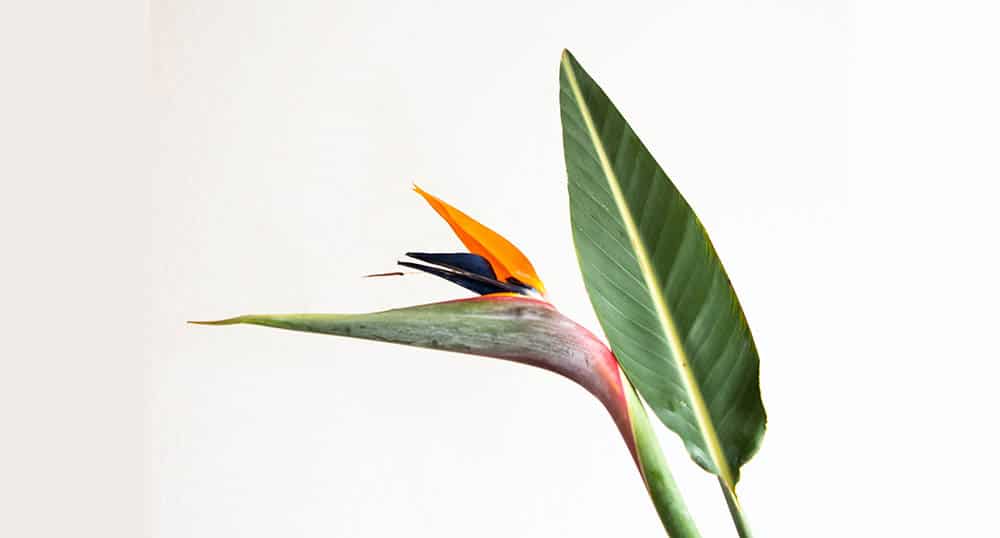
Strelitzia reginae is the most famous of the Strelitzia species. Typically characterized by vivid, orange flowers, reginae is the official flower of the City of Los Angeles.
Reginae is the most common Bird of Paradise to be found in the United States and can be easily grown as a houseplant – though, as previously mentioned, it requires unusually warm and humid climates to thrive outdoors.
Though this plant can take up to ten years to reach maturity, which can delay its production of flowers, it is generally hardy when properly watered and insulated from cold drafts. Furthermore, its maximum height makes it an excellent fit for many indoor spaces.
When grown indoors, a Strelitzia reginae can reach heights of 6 feet tall and 4 feet wide. While this is substantial, it does not grow too large for most homes or offices, unlike some of its sister species.
Strelitzia Nicolai
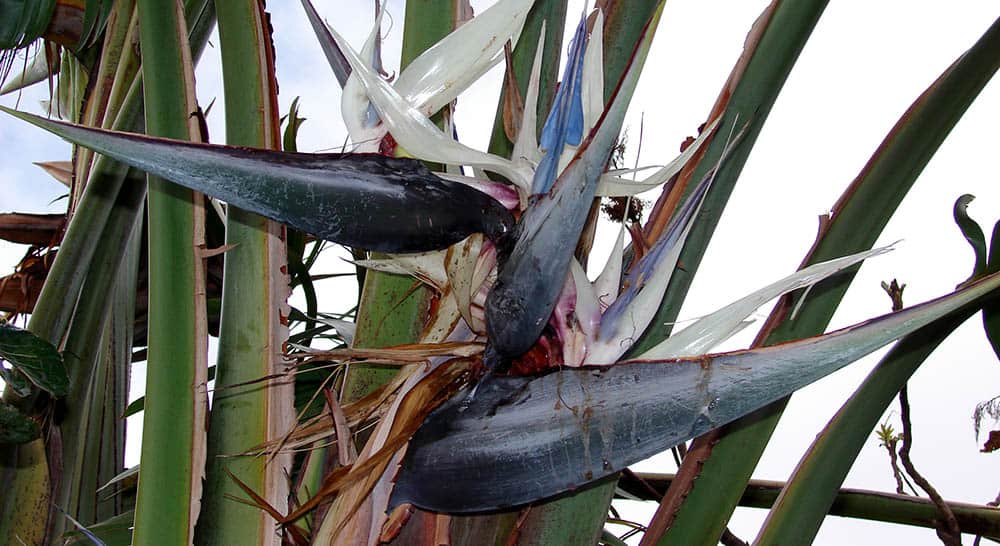
Strelitzia nicolai is one of the largest species of Strelitzia, easily reaching heights of 20 feet. This species is more commonly found in the forests of South Africa, where its height gives it a competitive advantage for sunlight.
And while it is taller than Strelitzia reginae, it retains a similar appearance, including individual stalks, thick, paddle-shaped leaves, and crown-like flower shape. But unlike reginae, which is often orange or yellow, Strelitzia nicolai has petals with white and dark blue coloration. Furthermore, in keeping with the large size of the plant, these flowers can grow as large as 7 inches tall and 18 inches long.
Strelitzia Juncea
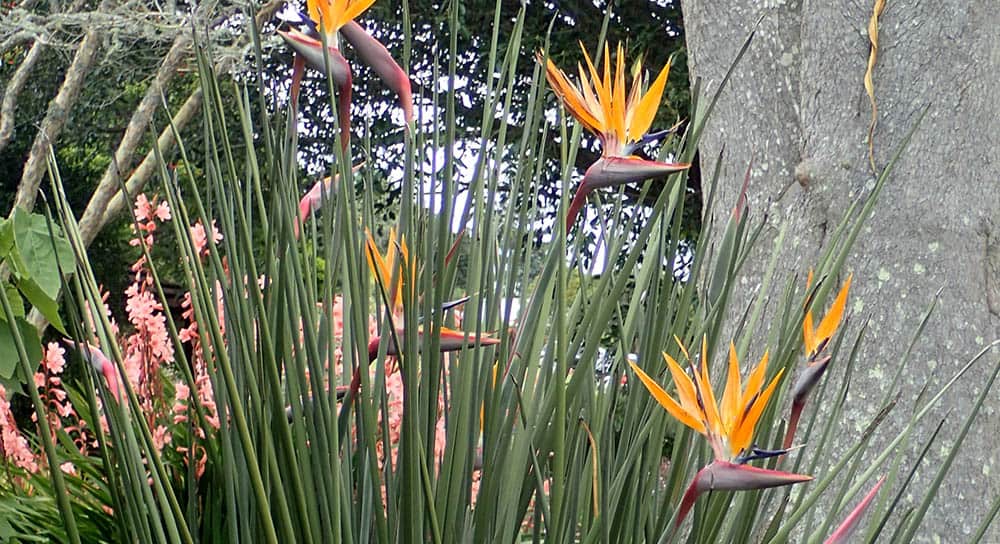
Compared to its fellow Bird of Paradise plants, Strelitzia juncea has a very distinctive aspect to its appearance, which is indicated in its name. Juncea is derived from the Latin word “Juncus,” which means “a rush.” In this case, “rush” refers to a grouping of plants commonly referred to as “rushes.”
Rushes are characterized by an abundance of long, thin stalks or leaves and often grow together in clusters. Sometimes called “reeds,” these plants are often found in marshland areas. And while Strelitzia juncea Is not a reed plant, its leaves have a similar appearance.
Unlike other species of Bird of Paradise, which possess thick, leathery leaves on top of tall stalks, juncea may not appear to possess leaves at all. As a result, its flowers, which are often shades of orange and pink, appear to be peeking out of clusters of thin, rush-like stalks.
This species of Bird of Paradise is also sometimes grown indoors and typically reaches heights of four to six feet.
Strelitzia Caudata
Strelitzia caudata is sometimes called the Mountain Strelitzia and is the rarest species of Bird of Paradise. This plant is almost entirely native to the mountains of Swaziland and is rarely found in other settings unless grown by an expert gardener.
This Bird of Paradise species also grows exceptionally large, reaching heights of 20 feet outdoors. This Bird of Paradise species is commonly confused with the Banana Tree, due to its native location, as well as its more rugged appearance and size. However, caudata possesses the characteristic multiple stems of a Bird of Paradise, as opposed to a thick central trunk.
While Strelitzia caudata may also closely resemble other large, outdoor Bird of Paradise plants, such as Strelitzia nicolai, it does have a notable difference in its flowers. The petals of Strelitzia caudata have a deep blue to mauve coloration.
Strelitzia Alba / Augusta
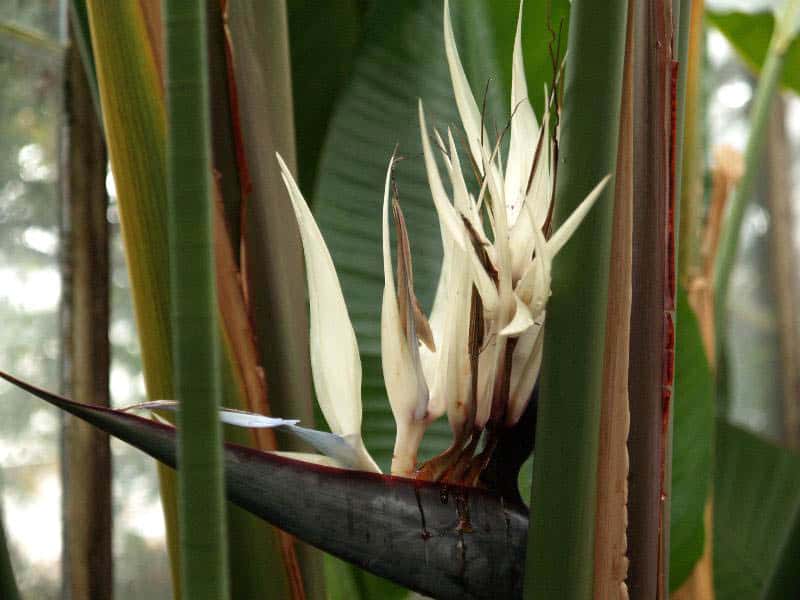
Like Strelitzia juncea, the most distinctive characteristic of Strelitzia alba is found in its name. Alba is a word of Latin origin, meaning “white,” and the flowers of this Bird of Paradise are entirely white and lack the blue coloration found in Strelitzia nicolai.
Aside from these notable, all-white flowers, Strelitzia alba has the same leaf shape as other Bird of Paradise species. That said, Strelitzia alba grows exceptionally large, reaching heights of nearly thirty feet tall in the wild and making it a rare plant to find outside of botanical settings.
Which Bird of Paradise Do You Have?
With the guidance above, you may already have a guess as to which Bird of Paradise species you have in your home or garden. However, if you live in the United States and currently own a Bird of Paradise, you almost certainly have a Strelitzia reginae. This is the most common variation of this plant to be cultivated in North America.
As previously mentioned, the height of this plant is amenable to indoor growth, and it has adapted well to U.S. cultivation. Although it is rare to find this plant grown outdoors, aside from a few semi-tropical locations, Strelitzia reginae adapts well to indoor gardens. Though it can be slow to bloom indoors, it can quickly reach heights of six feet tall.
Strelitzia reginae can also be easily divided through its rhizomes, allowing it to be propagated by plant enthusiasts of most skill levels. With stable conditions and careful watering, Strelitzia reginae can make an excellent houseplant, adding tropical flair to any living space, and providing a showstopping addition to your home for years to come.






